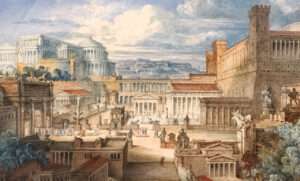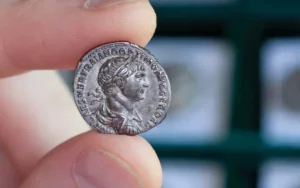Lesson 10: The Fall of Ancient Rome and Inflation

The decline of the Roman Empire, one of the most enduring and powerful civilizations in history, was influenced in part by a critical economic misstep—the debasement of its coinage. Beginning around 200 BCE, Roman emperors started reducing the silver content in their currency, particularly the denarius, to fund military campaigns, infrastructure projects, and the lavish lifestyles of the ruling class. Over time, emperors, facing mounting expenses and a growing need for revenue, resorted to mixing more copper and less silver into their coins. This practice, called coin debasement, allowed the government to produce more money with the same amount of precious metal but at the expense of the currency’s intrinsic value. By the third century CE, the silver content in the denarius had plummeted to almost nothing, a clear sign of inflationary pressures.

The initial decision to debase the coinage may have seemed like a necessary short-term solution, but it ultimately sowed the seeds of economic collapse. As the Roman Empire expanded, maintaining a stable and trustworthy currency became increasingly challenging. The debasement of the coinage led to a gradual erosion of confidence in the currency, as merchants and citizens began to realize that their wealth was rapidly being diminished in real terms. The supply of silver-backed money dwindled, and as more devalued coins entered circulation, prices for basic goods and services began to rise. This rapid devaluation disrupted trade and hindered economic activity, leading to further instability.
As inflation took hold, it became clear that the erosion of wealth had severe consequences for both the Roman economy and society. The most immediate impact was felt by the Roman citizens, whose savings were effectively wiped out by the rapid depreciation of their money. The purchasing power of the denarius shrank, making it more difficult for individuals to afford everyday goods like food, clothing, and tools. While the elites of Roman society, including the emperors and wealthy landowners, could shield themselves somewhat from inflation, the common people suffered disproportionately.
The inflationary pressures also led to a breakdown in the economic structure that had once supported the Roman Empire. For the Roman military, which relied on a steady flow of wages to maintain its ranks, the devaluation of the coinage spelled disaster. Soldiers, whose pay was traditionally provided in silver-denominated coins, found that their wages no longer held the same value. This loss of income was exacerbated by the fact that military expenditures were increasing, as the Empire needed to defend its vast borders from increasing external threats. The Roman military, which had been one of the main pillars of Roman power, became demoralized and less effective as its soldiers’ real pay diminished, ultimately weakening the empire’s military capabilities.
Although currency debasement was a significant contributor to Rome’s decline, it wasn’t the only factor that led to the empire’s eventual fall. The Roman Empire had become too vast and complex to govern effectively, and the costs of defending its borders and maintaining its infrastructure were mounting. As inflation accelerated, the empire also suffered from widespread political instability, corruption, and the growing power of local warlords. These factors combined with the economic strain caused by inflation created an environment where civil unrest, peasant revolts, and invasions by barbarian tribes became commonplace. By the time the Western Roman Empire fell in 476 CE, the economic damage inflicted by inflation and the inability to sustain a stable currency had taken a decisive toll on the empire’s ability to function as a cohesive political and military entity.
